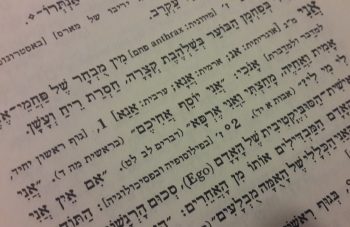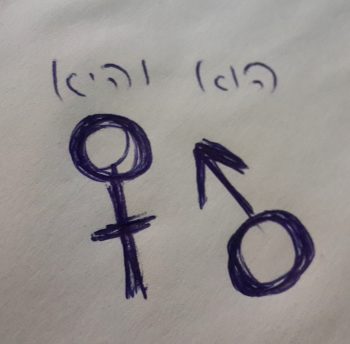Archive for 'Grammar'
Gorge on Ice Cream in Hebrew Posted by Ayana on Aug 1, 2016
My very first post on the Hebrew Transparent Blog was about ice cream. It’s been exactly one year, and we are now back again in the midst of the burning season. I can’t let a summer pass without a post about ice cream. It’s sweet, it’s creamy, it’s refreshing, it’s the best icy desert to…
Hebrew Grammar: Consonantal Roots Posted by Ayana on Jul 19, 2016
Like Arabic, Aramaic and Amharic, Hebrew also belongs to the Semitic language family. Semitic languages share similar features, such as grammatical conjugation, word order, and so on. All of the Semitic languages exhibit a unique pattern of stems called Semitic roots. These roots are sequence of consonants, usually composed of three consonants. Two- and four-consonant…
Hebrew Grammar: First Person Pronoun “I” Posted by Ayana on Jun 8, 2016
Two first person pronouns for “I” appear in the Bible: אֲנִי and אָנוֹכִי. As in English both refer to a singular speaker, male or female. Although homiletic interpretations of the Bible try to differentiate the pronouns, literally they both mean I or me. Here are two examples for each pronoun to illustrate the similarity of…
Hebrew Nouns` Gender: How to Distinguish Feminine from Masculine Posted by Ayana on Jan 31, 2016
Unlike English, Hebrew belongs to the group of languages that have grammatical gender. The predicate in Hebrew conjugate according to the gender of the subject, which makes the gender of the nouns matters as much as the gender of the pronouns. The subject in Hebrew is divided into masculine and feminine. There is nothing male…
Conversational Hebrew: A place to start the morning Posted by Sean Young on Mar 10, 2014
Leah and Miri are sitting in a cafe in Jerusalem having breakfast. Daniel comes and asks if he can sit at the table and strikes up a conversation. דָּנִיאֵל: אֲנִי רוֹאֶה אֶתְכֶן כָּאן לְעִתִּים-קְרוֹבוֹת.אַתֶּן בָּאוֹת לְכָאן כָּל יוֹם? מִירִי: כֵּן, זֶה מָקוֹם נֶחְמָד לְהַתְחִיל בּוֹ אֶת הַבֹּקֶר. דָּנִיאֵל: גַּם אֲנִי אוֹהֵב לִקְנוֹת קָפֶה בַּדֶּרֶךְ…
Verbs in Action: Binyan Pa’al Posted by Sean Young on Jan 30, 2014
The binyan פָּעַל is the most basic and simplest to understand conjugation to learn. It does not contain any special identifying markers other than the root letters. In most פָּעַל conjugations, the stem consists of the sequence CoCeC – פּוֹעֵל. The vowels ‘o’ and ‘e’ are the stem vowels that help create most of the…
Verbs in Action: The Seven Binyanim Posted by Sean Young on Jan 27, 2014
Hebrew vocabulary is quite flexible when you think about it. This is because Hebrew words are based on roots consisting of 3 consonants; you may find some with 2 or 4 consonants, but you won’t find them very often. From these roots you can modify them by changing the vowels, or adding certain prefixes, suffixes…








